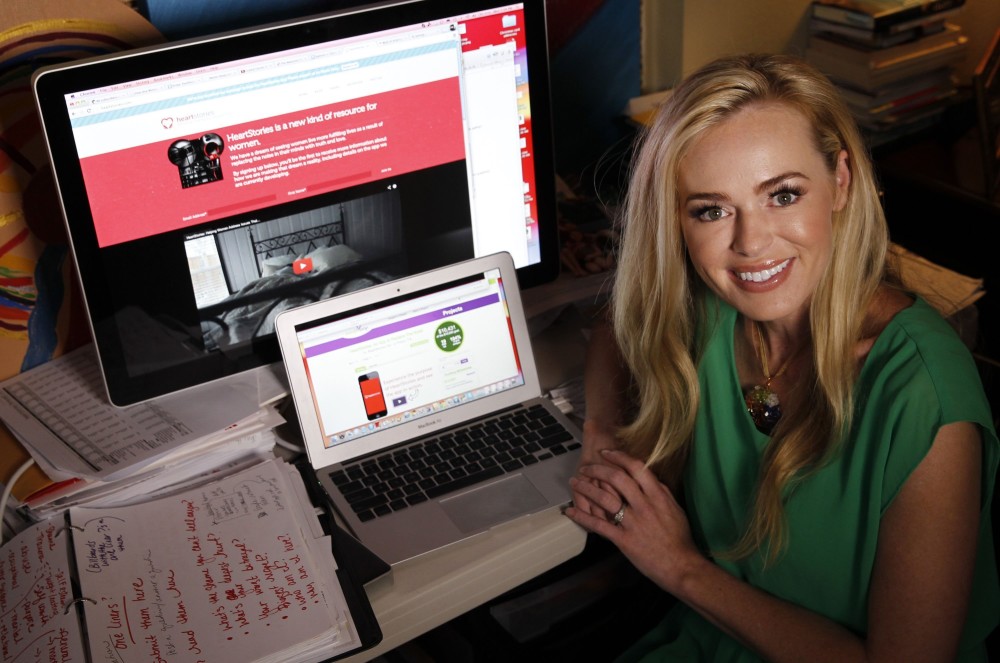By Marisa Kendall
The Mercury News
WWR Article Summary (tl;dr) Since Kickstarter launched in 2009, it’s been used by more than 4,000 tech projects to meet their funding goals, with 51 of those projects raising at least $1 million. Crowdfunding has been especially beneficial for women in business. While studies show that men get far more vc funding, WOMEN outperform men on crowdfunding sites like kickstarter.
OAKLAND, Calif.
When Oakland startup MegaBots needed cash to give its 15-foot-tall, 12,000-pound combat robot more firepower, the company put out a call for help online.
The founders set up a crowdfunding campaign on Kickstarter.com last summer, explaining that their giant robot needed modifications to prepare for a duel with another robot built by a team in Japan. A month later, MegaBots had raised more than $550,000 from almost 8,000 supporters.
Crowdfunding is becoming a popular option for early-stage startups that need capital to get off the ground. It generates buzz among potential customers and, for a few companies, can raise seven figures. It may be an especially attractive option in the current market, with venture funding harder to come by. But multimillion-dollar success stories remain rare, and it isn’t expected to replace VC funding anytime soon.
Since Kickstarter launched in 2009, it’s been used by more than 4,000 tech projects to meet their funding goals, with 51 of those projects raising at least $1 million. And the market may be about to expand exponentially, thanks to new federal regulations that go into effect this spring making it easier for startups to give their online backers a share in their company instead of just a thank-you T-shirt.
“I think in five years, every company that wants to raise money, the first thing they do is go online,” said Markley Roderick, a crowdfunding attorney in New Jersey who works with California clients.
In 2014 crowdfunding campaigns raised $9.46 billion in North America, and the industry had an annual growth rate of 145 percent, according to a study published last year by crowdsourcing research and advisory firm Massolution. Some of the projects launched on Kickstarter have been hugely successful. Pebble, based in Silicon Valley, raised $20 million last year to fund its smartwatch, making it the most-funded Kickstarter campaign ever.
Still, crowdfunding isn’t going to replace traditional VC and angel funding anytime soon, says VLP Law Group founding partner David Goldenberg, who represents startups in funding deals and other matters. Venture capital firms pumped more than $27 billion into Silicon Valley last year, according to a report by the National Venture Capital Association.
“If you’re going for crowdfunding, most of the time it’s because you’ve struck out with those more traditional sources,” Goldenberg said.
It’s also harder to raise a large chunk of cash on a crowdfunding platform. Globally, the average donation-based crowdfunding campaign raised a little more than $3,000 in 2014, according to the Massolution study. And most campaigns fail. Only 36 percent of Kickstarter projects reach their funding goal, according to the company. When a Kickstarter campaign falls even $1 short of its funding goal, it gets nothing _ the project’s contributors are never charged.
Experts say crowdfunding allows fans to support ideas they’re passionate about and feel like they’re connected to the company. In exchange for their cash, they generally receive early access to the company’s product, or swag such as T-shirts and stickers. But those warm feelings can fade quickly if the startup takes their money and then cashes out, as happened with virtual reality company Oculus VR in 2014.
Oculus raised $2.4 million on Kickstarter in 2012 before being acquired by Facebook for $2 billion two years later. The acquisition sparked complaints from some of the 9,500 Oculus backers who got nothing from the deal, though they hadn’t been promised a payout, and weren’t entitled to a stake in the company. In January, Oculus announced it would ship free virtual reality headsets to its Kickstarter backers.
The founders of Flosstime, also based in Silicon Valley, say their Kickstarter campaign was about the experience as much as the money. They raised almost $53,500 from more than 1,000 backers in December for their smart dental floss dispenser. The futuristic-looking machine sticks to a bathroom mirror and displays a blue “smile” when the user flosses regularly, and a red “frown” when he or she doesn’t.
“There’s a lot of momentum behind crowdfunding, and it’s almost like a badge of honor if you pull it off,” said CEO and founder Michael Evans.
The campaign gave Flosstime far more publicity than a VC round, and it allowed the startup to connect with its customers and get early feedback on the product, he said.
Up in Oakland, MegaBots had a similar experience.
“The Kickstarter campaign really helped us generate awareness and connect with our most passionate fans,” said co-founder Brinkley Warren.
Last year’s campaign was MegaBots’ second try. The company failed to reach its $1.8 million goal in 2014, receiving pledges of just $65,319, and walked away with nothing. MegaBots succeeded the second time around, after reining in expectations.
Since then MegaBots has raised more than $2 million in private investment, including a recent VC round from investors including AME Cloud Ventures and Azure Capital Partners, Warren said. The company, which hopes to turn robot fighting into the sporting event of the future, continues to work on beefing up its prototype robot to make it battle-ready.
New SEC rules go into effect this month that will expand equity crowdfunding. Companies will be able to raise up to $1 million a year from anyone, friends, family, neighbors, fans or strangers, and give their backers a share of the company in exchange for their investment.
Rob Solomon, CEO of charity crowdfunding platform GoFundMe, predicts equity crowdfunding is going to be “disastrous” for most inexperienced investors.
“Investing in startups and picking the right ones is really hard,” he said. “It’s really hard to get it right even if that’s what you do for a living.”














































































































































































































































































































































































